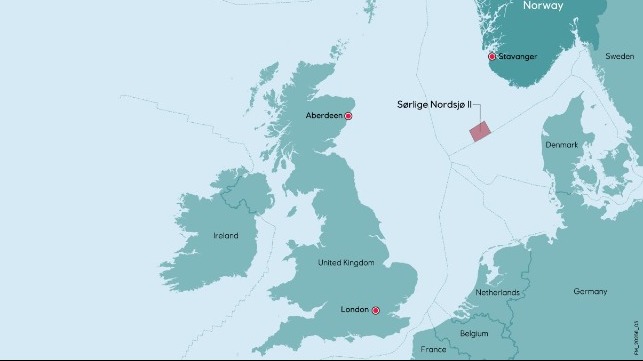Equinor and RWE Team Up to Bid for Giant Wind Farm Lease off Norway

Energy majors Equinor, RWE Renewables and Hydro REIN have formed a joint partnership to bid for a large-scale wind farm at the Sørlige Nordsjø II lease block in the Norwegian North Sea. This comes just days after Norwegian authorities announced plans to license the Utsira Nord and Sørlige Nordsjø II areas for offshore renewables, including offshore wind power.
“Offshore wind power offers great opportunities for Norwegian businesses. In the immediate future the market will be in other countries, but if the costs for offshore wind power continues to fall it could also become competitive in Norway. It is now time to prepare for future development by allocating space for offshore renewables,” said Tina Bru, Norway Minister for Petroleum and Energy.
The Utsira Nord and Sørlige Nordsjø II areas have a combined potential to generate 4.5 gigawatts of wind power. Sørlige Nordsjø II covers an area of 1,000 square miles and has depths of between 53 and 70 meters, which makes it possible to develop both bottom-fixed wind power installations and floating solutions. The area borders the Danish sector of the North Sea and is ideally located for supply of electricity to Europe.
Pål Eitrheim, Equinor’s executive vice president New Energy Solutions said the North Sea has among the world’s best wind resources, giving it the potential to become an offshore energy hub for the EU market. “We have the industrial capabilities, from the turbine to the consumer, to create value and supply renewable power to Europe,” said Eitrheim.
The Sørlige Nordsjø II area has some of the best wind resources in the world, and it has the potential to deliver a significant amount of renewable energy to countries that are aiming to transform their energy mix. The European Union and United Kingdom have stated the ambition to achieve 300 GW and 100 GW (respectively) of offshore wind capacity by 2050 in order to reach their net zero ambitions.
“Offshore wind will be an important component in the future energy mix to decarbonize Europe and reach the 2050 targets,” said Arvid Moss, Hydro Energy’s executive vice president.
Both Equinor and RWE have strong track records in developing large offshore wind infrastructure projects, and they have worked together before. The companies jointly developed the 385 MW Arkona offshore wind farm in the German part of the Baltic Sea.
The development of renewable energy will likely eclipse oil and gas in the Scandinavian Peninsula as the world makes a shift to clean energies. In March, Denmark approved a plan to build an artificial "energy hub" island in the North Sea, which will provide transmission infrastructure for hundreds of offshore wind turbines with a comined capacity of about 10 gigawatts.
The first three-gigawatt phase is being implemented at a cost of $34 billion, and it is expected to be operational by 2033.
